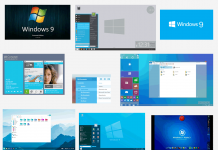Most people who take photos with a compact will want to be able to simply pull out their camera, turn it on, point it at the subject and push the shutter to take the photo. Usually this works quite well assuming everything goes to plan and the camera has been well maintained, however, there are many times something will go wrong, such as heading out on a scenic trip without a flash card in the camera!
Be prepared!
Resolution - Unless you absolutely have to, always leave the resolution set to the maximum resolution and quality. Buy a larger card if you find your card does not hold enough photos. You can always use photo editing software to resize photos down to a lower resolution or quality for e-mailing, but you cannot resize low resolution photos back up and get back all the detail if the camera was accidentally set to VGA mode!
Lens - Periodically check for fingerprints and dust, especially if someone else used the camera. It is very easy to get fingerprints on the lens when playing back photos, especially when the person viewing them may not realise the lens is still extended. Note that some cameras can playback photos without extending the lens by holding down the ‘Play’ button (if present) to turn on the camera or setting the switch to ‘play’ before powering on (for cameras with a play/capture switch).
Remaining card capacity - If the card is over half filled, consider transferring the contents to a PC and erasing the card or keeping a spare empty card with the camera. This will reduce the likelihood of picking up the camera only to find it full. Always remember to keep a card in the camera.
Batteries - Lithium Ion/Polymer batteries don’t have a memory effect, so they can be repetitively charged even after taking just a few photos. Unless you have a spare battery handy, don’t wait until the battery goes flat before recharging it, as this can easily happen when you most need to use the camera! Think of it like your smoke alarm - try to always keep a working battery in your camera.
Spare batteries - Before going on holidays, consider picking up a spare battery, as it is quite easy to forget to recharge the battery each evening. Even if your camera takes AA’s, beware that some corner shops in busy tourist areas charge a hefty premium for them.
Spare card - Always have a decent size empty card handy. Don’t leave your spare cards lying around full of pictures! Should you find your current card full and have to resort to a spare card, the time it takes to empty it could be the difference of getting and missing the shot.
Mode Dial - Always set the dial back to “Auto” (or “P”) after you take video footage or use another mode. It’s quite easy to try taking photos in the wrong mode while in a hurry only to find out later on that they were all blurred, dark or 1-2 second video clips as I’ve once seen someone end up with!
Switches - For cameras with switches, set these back after use, i.e. Macro switch to ‘Off’ and Play/Capture to ‘Capture’.
Flash - Be sure to set the flash back to ‘Auto’ after using another mode. It’s quite easy to accidentally leave the flash set to ‘Forced’, causing the flash to go off when not needed and reducing the remaining capacity of the batteries.
Before going on a trip:
2 Cameras - If travelling with someone else, it’s worth bringing with two cameras instead of sharing the one. This way in the unlikely event that a camera goes missing, stops working or a card goes bad, there will still be some pictures to take home. If only one digital camera is available, consider bringing a disposable as the second camera.
Contact Details - Consider taking a photograph of contact information (phone number or e-mail address) on each card that will be brought along. This way if a camera or card is accidentally left behind and are lucky, someone who later comes across it will be able to try returning it back to its owner, especially if left behind in accommodation.
When taking the photo:
Rule of Thirds - Instead of placing the subject in the centre, think of the frame divided into 3 columns and 3 rows and consider lining up the subject or a horizon to one of these virtual lines. On some cameras, the rule of thirds lines can be shown by pressing the 'Display' or 'Info' button. This Wikipedia entry explains this in more detail.
Shutter Button - Point the camera at the subject and hold down the shutter half-way to let the camera prepare for the shot and look at the screen to ensure there are no warnings (e.g. flash requirement). For a photo of people using face detection, there should be a square shown over each space. Finally, push the shutter button the rest of the way down to take the photo. This process is most important when photographing a subject where timing is crucial, as when the shutter is half-way pressed, it will take the photo almost instantly when fully pushed.
Pre-focus - On the auto mode, most cameras give focus priority to the middle. However, if you need something off to the side in focus, first point the camera at that subject, press the shutter button halfway to focus. With the shutter still halfway pressed, reposition the camera to how you want the photo to come out and finally push down the shutter button fully.
Shadow reduction - When taking a photo of people on a sunny day, it can be annoying when their faces end up dark or with shadows. To overcome this issue, set the flash to forced on or fill-in (depending on the camera model.)
People - When photographing scenery, personalise some photos by getting a friend/partner to stand in and get them to take a photo of you also with the scenery. This not only shows you were there on holidays, but also that these photos were taken by you also.
Camera Shake - When taking a photo in low light or with a longer shutter speed, lean against something such as a wall or tree to reduce camera shake. Use both hands where possible.
2 Second Timer - Ever wonder what the 2 second timer is for? If you do not have a tripod handy, this setting allows for taking photos in very low light or for maximum image quality with the camera placed down. The 2 second timer gives time for the camera to steady itself after pressing the shutter button before taking the photo. Even for hand-held photography, the 2-second timer also reduces handshake, as most blurring by handshake is caused when pushing the shutter button to take the photo.
Motion - When taking a photo of something in motion such as water or a group dancing, try setting the camera to shutter priority and reducing the shutter to like 1/15th second to capture the motion. Note that for very slow shutter speeds, the camera will likely need to be placed on a tripod or at least rested on something to ensure a clear picture.
Background - When taking close-ups of items such as flowers, try blurring the background as follows: set the dial to aperture priority (if available) and choose the widest aperture (lowest F-stop #), enable Macro, zoom in as far as the lens will go, move the camera as close to the subject as possible where it can still focus on it and take the picture.
Check - Go into the playback mode and zoom into the last photo to ensure it is in sharp focus and that it looks as how you would like it. Remember, it’s usually a lot easier to fix a photo before pushing the shutter than in photo editing software. For example, it’s usually much easier to chase away a pigeon or remove an unsightly object before pressing the shutter than it is to edit this out later on.
Effects - Try out the different film effects such as sepia and black & white. While the effects generally come out better with processing in photo editing software, applying the effects in-camera has the advantage of having the photos ready for print. Be sure to turn the effect off afterwards to avoid the effect being applied unexpectedly to the next photo.
Experiment - Try taking photos from different angles, low down, closer-up and further away. If taking photos outdoors with trees around you, stand below a branch and allow part of it or even a few leaves to appear at the corner of the photo.
Maintaining your photos:
Flash as film - Flash memory has come down in price to the point where low capacity flash cards are as cheap as film in some shops, but with the ability to store several hundred photos. Instead of blanking the card each time its photos have been transferred to a PC, consider locking it and keeping it in a safe place. Unless you are an active photographer, this is a good way of having a second backup of photos. If each holiday costs several hundred quid, surely you can afford one or two 2GB flashcards for each trip.
Categorise - When transferring the photos to a PC, store the photos of each event in its own folder and group them by year. This makes it much easier to find photos later on instead of looking through a huge folder of mixed photos!
Share your tips!
Did we miss something? Come share it with us here. 










